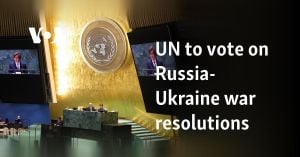The complex cultural heritage of Kazimir Malevich, the renowned artist credited with founding the Suprematism movement, has recently ignited debates around national identity, particularly within the contexts of Russian and Ukrainian cultural histories. Despite being born in Kyiv, Ukraine, the art community continues to grapple with the classification of Malevich as a 'Russian' artist, especially on platforms like English Wikipedia where he is prominently labeled as such.
This identification has drawn considerable scrutiny from cultural commentators and scholars alike. The popular blogger and advocate for Ukrainian culture, Krapka Krapka, emphasizes the absurdity of Malevich being termed solely 'Russian', pointing out the complex nature of identity among avant-garde artists who sought to transcend national boundaries. Malevich himself asserted his Ukrainian identity when he filled out documents during interrogations by Soviet authorities, stating, "I am Ukrainian". His heritage is certainly pivotal, as his father was Polish and his mother hailed from Poltava, deepening the multicultural aspects of his background.
Born on February 23, 1879, Malevich emerged as one of the leading figures of the avant-garde movement, revolutionizing the art world with his defining creation — Suprematism. This movement not only impacted visual arts but also challenged existing perceptions of art's purpose and its notation among cultures. This ideology aligns with Ukraine's artistic expressions, particularly during contentious periods like the Holodomor, which greatly influenced Malevich's perspective and artistic output.
Interestingly, some of Malevich's most significant early influences came not from the traditional art elite but from artisans from rural Ukraine. He developed early sketches and concepts with the help of local embroidery artisans, including Nyna Henke-Meller, who became instrumental during one such artistic collaboration. These women absorbed avant-garde concepts and infused them within their cultural craft, which formed part of the foundation of the works Malevich would later present.
Given the socio-political backdrop of early 20th century Europe, Malevich's pieces addressed not just art but also the communal suffering of Ukrainians living under Soviet rule. Many of his artworks are now valued at millions, yet much of his legacy remains cluttered within Russia, which raises difficult questions about ownership and cultural appropriation. Today, much of his oeuvre can be found within Russian galleries, continuing the trend of claiming and redefining his artistic contributions.
The cultural debate over Malevich is reflective of larger conflicts over identity, memory, and national pride between Russia and Ukraine. Malevich's life serves as both a lens and a battleground for these issues; whether his work belongs to the Russian narrative or can be firmly anchored within the Ukrainian identity presents insights not just about history but about contemporary disputes affecting both nations.
Looking forward, it becomes imperative to understand and honor the nuances of Malevich’s heritage through advocacy and scholarship focused on reclaiming and redefining his legacy within the Ukrainian narrative. Cultural artifacts are not mere relics of the past but active participants in the dialogue about identity, heritage, and ownership.
Such discussions are especially poignant today, amid tensions between the two countries. Acknowledging and promoting Malevich's Ukrainian roots could serve as one small yet significant step toward rectifying historical oversights and perhaps even fostering greater cultural comprehension across borders.



